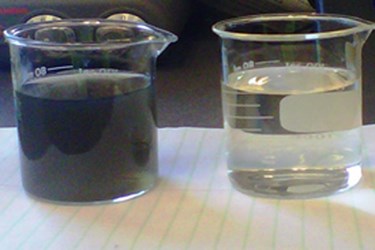Biological Nitrogen Removal for MSW Landfill Leachate Treatment

By Sara Arabi, Andrew Lugowski, Duncan Millar, and Steven Wilsey, Conestoga-Rovers and Associates
Prior to the early 1970s, landfill design did not include any form of barrier systems to prevent leakage of contaminants to the surrounding environment. Following major leakage incidents such as the Love Canal episode (Niagara Falls, New York), the importance of barriers and leachate collection systems was recognized and incorporated into landfill designs.
Municipal Solid Waste (MSW) landfill leachate treatment is a major engineering challenge due to high and variable concentrations of dissolved solids, dissolved and colloidal organics, nitrogen, and heavy metals. Landfill constituent concentration ranges as a function of the degree of landfill stabilization. Cold leachate temperature is also a major challenge in leachate treatment in cold climates. Traditionally landfill leachate has been hauled or pumped to Publicly Owned Treatment Works (POTWs) for disposal. More stringent discharge criteria, especially for nutrients, required many landfills to employ pretreatment for indirect discharge to the sewers or secondary treatment (or more) for direct discharge. Potential negative impacts of landfill leachate discharge to POTWs are as follows: potential biological process upsets, heavy metals in the leachate may negatively impact the biological process, Refractory dissolved organic nitrogen (rDON) and chlorides in the leachate are untreated and may result in non-compliance, the non-biodegradable COD in the leachate also pass through the effluent of the POTW, and the color in the leachate negatively impacts the performance of the UV disinfection at POTW.
The selection of the proper leachate treatment technology for a landfill site requires careful consideration. The choice of technology depends largely upon the characteristics of the leachate, discharge limitations (e.g. direct or indirect discharge), and site constraints. The on-site treatment of leachate has progressed from coagulation/ precipitation to biological leachate treatment or more advanced treatment systems such as Reverse Osmosis (RO).
Biological leachate treatment is a proven technology for organics and ammonia removal in young and intermediate landfill leachate. Biological leachate treatment has been carried out successfully for more than thirty years, and has been one of the lowest cost methods of leachate treatment. Ammonia removal from leachate is an important aspect in leachate treatment and nitrification is one of the most economical ways to remove ammonia from landfill leachate.
Biological Nutrient Removal processes allow for lower operational cost for the leachate treatment through anoxic (un-aerated) degradation of waste as well as significant removal of nitrogen. The main advantage of BNR processes for leachate treatment is stable nitrification as a result of organic loading dampening in the anoxic tank. In biological treatment systems, it is important to maintain a balance between the organic and nitrogen loads that result in a high nitrifier fraction in the biomass. Since nitrifiers have a relatively low cell yield, if there is a change in the available ammonia to biodegradable organic ratio, a shift in the biomass population can easily occur causing the nitrifier mass to not be adequate. The organics to ammonia ratio in leachate varies significantly as the leachate ages and this may cause poor performance in the nitrifying systems. Denitrification reduces the organic load to the aerobic nitrification tank which results in more stable nitrification. Other advantages of BNR processes for leachate treatment are removal of nitrate in the denitrification zone, reduction of oxygen demand, recovery of alkalinity through denitrification, filament control, and improved sludge settlabilty.
As the leachate ages, the ratio of biodegradable organics to nitrogen drops and external carbon sources such as methanol or MicroC™ Premium Carbon Sources may be required to achieve higher degree of denitrification. MicroC™ Premium Carbon Sources provides safer, more economical and more environmentally sustainable carbon sources for municipal and industrial wastewater treatment.
Landfill leachate characteristics related to quality and quantity are site-specific and vary from one site to the other; therefore, site-specific sampling and monitoring results are required to characterize the leachate at each landfill site. The characterization of leachate provides important information necessary of the design and operation of leachate treatment facilities. Bench scale treatability or pilot plant studies are useful and often vital to determine the site specific design criteria and scalable data for the design of leachate treatment systems. The treatability studies also indicate if the leachate is biologically treatable, determine the biological inhabitation or toxicity of the leachate, and if chemical pre-treatment is required prior to biological system.
Conestoga-Rovers & Associates has conducted leachate characterization, pilot and bench scale studies, feasibility studies, conceptual and detailed design for numerous on-site landfill leachate treatment systems in Canada, U.S., and South America.
